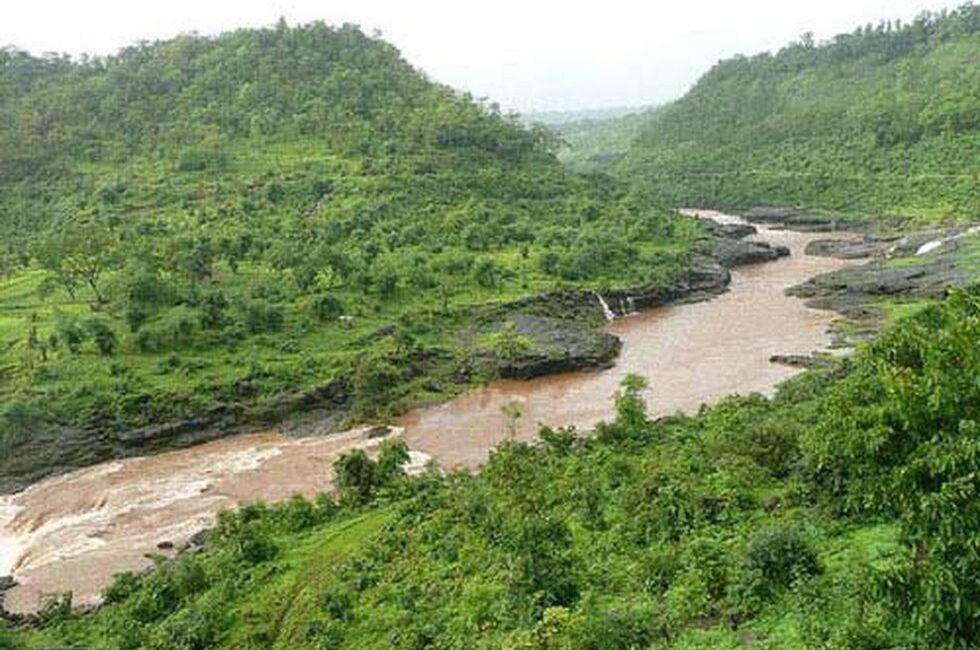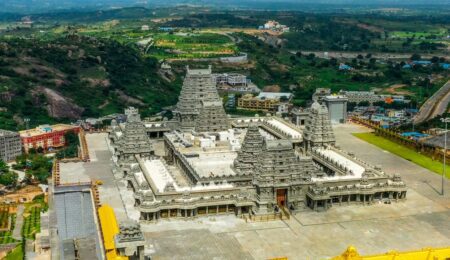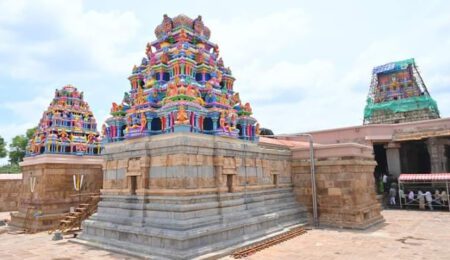Vaitarna River Maharashtra: The Lifeline of Western Ghats
Introduction
The Vaitarna River Maharashtra is one of the most significant rivers in the western region of India. Flowing through the lush landscapes of the Western Ghats and cutting across various terrains of Maharashtra, the river is more than just a water body, it is a source of livelihood, culture, biodiversity, and ecological balance. From powering cities like Mumbai with drinking water to hosting ancient temples and agricultural communities along its banks, the Vaitarna River plays a vital role in the state’s socio-economic and environmental fabric.
In this article, we’ll explore the origin, course, historical significance, ecological value, tourism potential, and challenges associated with the Vaitarna River Maharashtra. Whether you’re a traveler, a geography enthusiast, or an environmentalist, this in-depth guide will offer you valuable insights into one of Maharashtra’s most critical rivers.
Geographical Overview
Origin and Course
The Vaitarna River Maharashtra originates in the Trimbakeshwar Hills of the Nashik district in the Western Ghats. The hills, known for their sacredness and lush greenery, also give birth to other rivers like the Godavari. The river flows in a generally westward direction, traveling around 154 kilometers before emptying into the Arabian Sea.
The river passes through the districts of Nashik, Palghar, and Thane, making it an essential water body for multiple regions. As it meanders through forests, valleys, and urban settlements, the river receives water from its tributaries like the Pinjal, Surya, and Tansa rivers, which further strengthen its flow and importance.
Hydrological Importance
Water Supply to Mumbai
One of the most critical roles played by the Vaitarna River Maharashtra is supplying drinking water to Mumbai, India’s financial capital. The river’s catchment area houses a network of reservoirs and dams that feed Mumbai’s massive population. Key reservoirs such as:
- Upper Vaitarna Dam
- Middle Vaitarna Dam
- Modak Sagar (Lower Vaitarna Dam)
These dams have become lifelines for millions. The Upper Vaitarna Dam, constructed in the 1970s, alone supplies around 25% of Mumbai’s daily water needs. Without the river’s dependable flow, the city would struggle to meet even its basic domestic requirements.
Historical and Cultural Significance
Mythological Connections
The Vaitarna River finds a special place in Indian mythology and Hindu scriptures. It is often mentioned as a symbolic river that souls must cross after death, akin to the Styx in Greek mythology. According to the Garuda Purana, the Vaitarni (a Sanskrit variant of Vaitarna) is a river that must be crossed by the soul to reach the afterlife. This belief leads many devotees to perform rituals and last rites on the banks of the river.
Ancient Temples
The regions surrounding the Vaitarna River Maharashtra are dotted with temples that attract pilgrims and tourists. These include:
- Trimbakeshwar Temple: Although associated with the Godavari, its location near the origin of the Vaitarna makes it spiritually significant.
- Vaitarna Mahadev Temple: An ancient Shiva temple visited by locals for religious offerings.
- Local shrines and ghats used for rituals and immersion of idols during festivals.
Ecological Richness
Biodiversity Hotspot
The river basin, especially in its upper reaches, is part of the Western Ghats, one of the eight “hottest hotspots” of biodiversity in the world. The Vaitarna River Maharashtra supports a range of flora and fauna, many of which are endemic or endangered.
Some notable species include:
- Freshwater fishes like Mahseer
- Amphibians such as bush frogs
- Birds including kingfishers, egrets, and herons
- Reptiles like freshwater turtles
The thick forests around the river also support leopards, wild boars, civets, and Indian bison, making it a significant ecological corridor.
Agricultural Dependence
Fertile Plains
The Vaitarna River Maharashtra sustains thousands of hectares of agricultural land, especially in the Palghar and Nashik districts. Crops like rice, millets, pulses, sugarcane, and vegetables thrive due to the river’s irrigation capabilities.
Traditional farming communities have historically settled near the river due to its dependable water source. Seasonal flooding, though sometimes destructive, also deposits rich alluvial soil, improving fertility and yield.
Traditional Fishing
The local tribal and fishing communities depend heavily on the river for freshwater fish and prawns. Traditional fishing practices not only provide livelihood but also reflect cultural knowledge passed down through generations.
Tourism and Recreation
Scenic Beauty and Trekking
The Vaitarna River Maharashtra offers scenic beauty and eco-tourism opportunities. The Vaitarna Backwaters are a favorite destination for those seeking offbeat travel. Lush green surroundings, misty hills, and calm waters make it ideal for:
- Camping
- Trekking
- Photography
- Kayaking and Boating
Popular nearby trekking destinations include:
- Kavnai Fort
- Harihar Fort
- Tringalwadi Fort
Vaitarna Dam Viewpoints
Tourists often flock to the Upper Vaitarna and Middle Vaitarna Dam for panoramic views. These areas are particularly attractive during the monsoon season when the dam overflows, and the surroundings become lush and vibrant.
Tribal Communities and Local Culture
Warli Tribes
The Warli tribe, known for their unique Warli paintings, inhabit areas along the Vaitarna River Maharashtra. Their art, culture, and sustainable living practices reflect deep ecological wisdom and harmony with nature.
Fairs and Festivals
During the monsoon and harvest season, several fairs and local festivals are held near the river. Cultural performances, boat races, and religious processions form a lively part of river-centric life.
Challenges Facing Vaitarna River
Pollution
Despite being relatively clean in its upper reaches, the Vaitarna River Maharashtra is under pressure due to urbanization, industrial runoff, and untreated sewage in downstream areas. Several studies have noted a rise in water contamination, impacting biodiversity and human health.
Encroachment and Deforestation
Deforestation in the river’s catchment area leads to soil erosion, sedimentation in reservoirs, and reduced water-holding capacity. Illegal encroachment along the banks also disrupts natural water flow and affects flood management.
Climate Change and Water Stress
With changing rainfall patterns and increasing drought events, the river’s flow is becoming less predictable. This affects not only water supply to Mumbai but also agriculture and groundwater recharge in the region.
Conservation Initiatives
Afforestation and Catchment Treatment
Local NGOs and government bodies have initiated reforestation projects and soil conservation programs to protect the catchment area of the Vaitarna River Maharashtra. These include building check dams, contour trenches, and rainwater harvesting systems.
Sustainable Agriculture
Efforts are being made to promote organic farming and efficient irrigation methods among farmers to reduce dependency on heavy chemical inputs that eventually flow into the river.
Ecotourism Development
Sustainable tourism initiatives like eco-lodges, guided nature trails, and community-based tourism are being promoted to provide economic incentives for conservation.
Future of Vaitarna River Maharashtra
With growing awareness about water security and environmental conservation, the Vaitarna River Maharashtra is gaining attention from policymakers, environmentalists, and citizens alike. There’s an urgent need to balance development with ecological preservation to ensure the river continues to serve future generations.
How to Reach Vaitarna River
By Road:
- From Mumbai: Around 120 km drive via NH 160 and Ghoti-Vaitarna Road
- From Nashik: Approx. 70 km drive to Upper Vaitarna area
By Rail:
- Nearest railway stations: Igatpuri, Kasara, Vaitarna
- Regular local and express trains connect these points to Mumbai and Nashik
By Air:
- Nearest airport: Nashik Airport (Ozar) and Chhatrapati Shivaji Maharaj International Airport, Mumbai
Conclusion
The Vaitarna River Maharashtra is not just a geographical entity—it’s a living ecosystem, a cultural symbol, and an economic backbone for millions. From sacred origins in the Trimbakeshwar Hills to its crucial role in quenching the thirst of Mumbai, this river embodies the interconnectedness of nature, culture, and civilization.
As we continue to extract resources from such rivers, it’s time to shift towards sustainable coexistence, ensuring that the Vaitarna River flows with the same vigor for generations to come. Whether you’re planning a monsoon getaway or researching India’s lesser-known rivers, the Vaitarna River Maharashtra deserves your attention, respect, and protection.




Leave a Comment